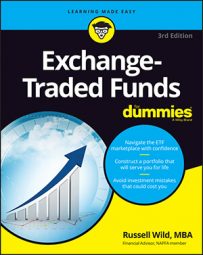At the core of every ETF is an index. The index is the blueprint on which the ETF is based. Some ETF providers use old, established indexes. Others create their own, often in conjunction with seasoned indexers. (That association helps them get approval from the SEC.)
As a rule, for an ETF to be any good, it has to be based on a solid index. On the other hand, a solid index doesn’t guarantee a good ETF because other things, like costs and tax efficiency, matter as well.
Standard & Poor’s
Owned by publishing powerhouse McGraw-Hill, Standard & Poor’s is perhaps best known for its credit-rating services. The company also maintains hundreds of indexes, including the S&P 500 (the one you’re most likely to see flashed across your television screen on the business channel). Over $1 trillion in investors’ assets are directly tied to S&P indexes — more than all other indexes combined.
More ETFs are based on S&P indexes than any other, by far. Those include the iShares broad-based domestic and international ETFs, the Sector SPDRs that track various market segments, most Vanguard U.S. ETFs, the Invesco PowerShares industry-sector funds, and the Guggenheim equal-weight ETFs. For more information, visit the Standard & Poor's website.
Dow Jones
If there were an index for the price of unsalted peanuts in Portugal, Dow Jones would be its purveyor. The company, aside from publishing The Wall Street Journal and Barron’s, develops, maintains, and licenses more than 3,000 market indexes. Those indexes include the world’s best-known stock indicator, the Dow Jones Industrial Average.
The iShares industry and sector ETFs are based on Dow Jones indexes, as are at least some of the ETFs issued by State Street, ProShares, Deutsche Bank, and Charles Schwab. For more information, visit the Dow Jones website.
MSCI
With indexes of all kinds — stocks, bonds, hedge funds, U.S. and international securities — MSCI (formerly Morgan Stanley Capital International), although not quite a household name, has been gaining ground as the indexer of choice for many ETF providers.
MSCI indexes are the backbone of the international Vanguard ETFs, as well as many of the iShares global-industry funds and single-country ETFs. For more information, visit the MSCI website.
Russell
The largest 1,000 U.S. stocks make up the Russell 1000 index, although it remains relatively obscure because the Dow Industrial and the S&P 500 hog the spotlight when it comes to measuring large cap performance. The next 2,000 largest stocks on the U.S. market are in the Russell 2000.
And the Russell 1000 plus the Russell 2000 make up the Russell 3000. Those are Russell’s more popular indexes, but it has plenty of others as well.
A dozen of the iShares domestic ETFs are based on Russell indexes, as are seven of Vanguard’s U.S. offerings. ProShares and Direxion also use Russell indexes. For more information, visit the Russell website.
Barclays
Lehman Brothers for years was the leading indexer in the world of fixed income investments. The firm was acquired by Barclays Capital in 2008 (just as Barclays was leaving the ETF business), and thus the long-famous Lehman Brothers Aggregate Bond Index, the closest thing the fixed-income world has to the S&P 500, is now called the Barclays Capital Aggregate Bond Index.
BlackRock’s iShares, SPDRs, Vanguard, and Van Eck all use Barclays Capital indexes for their fixed-income ETFs. Considering that the implosion of Lehman Brothers prior to its takeover by Barclays signaled the beginning of the financial crisis in 2008, a name change for these indexes seems understandable. For more information, visit the Barclays website.

